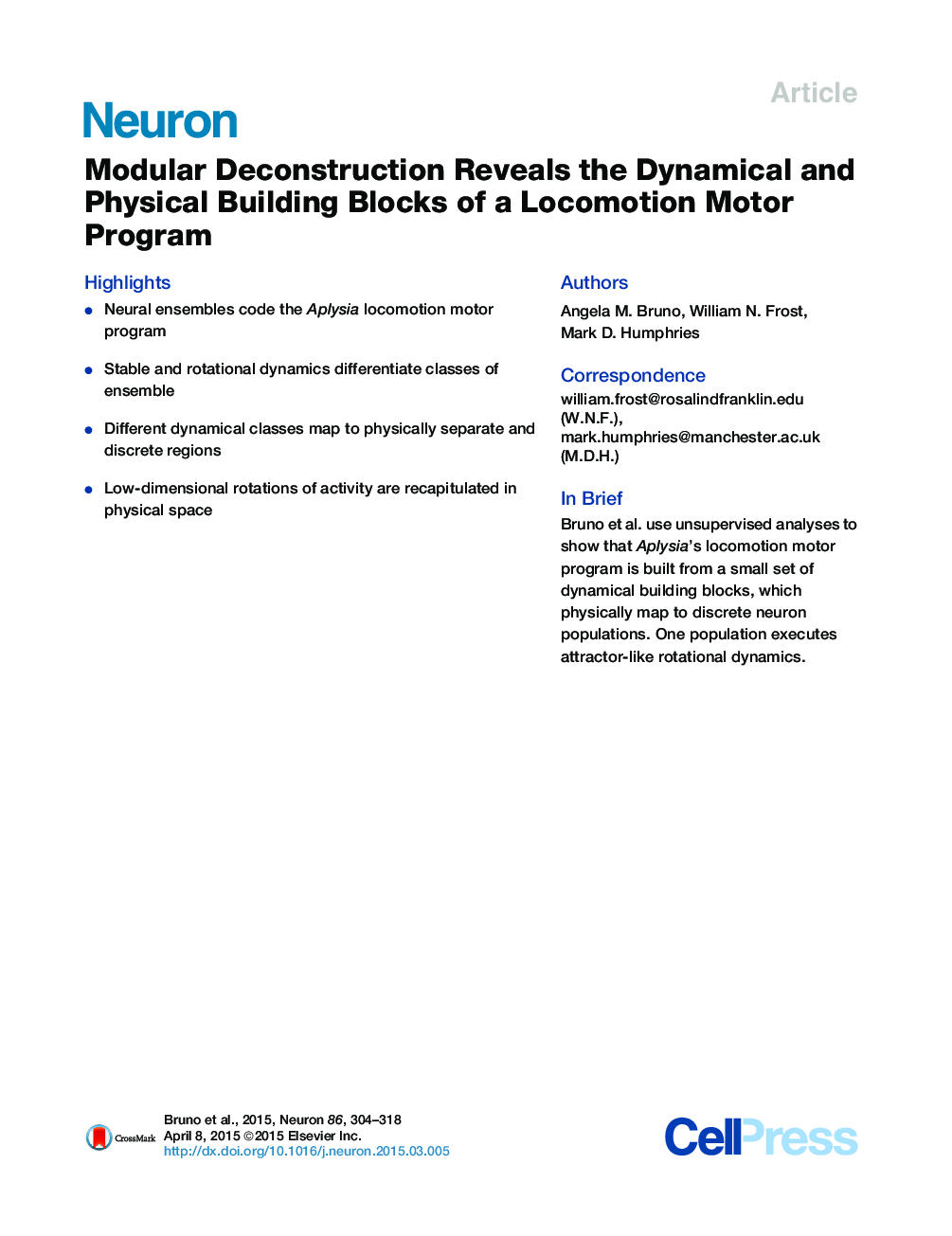| Article ID | Journal | Published Year | Pages | File Type |
|---|---|---|---|---|
| 4321014 | Neuron | 2015 | 15 Pages |
•Neural ensembles code the Aplysia locomotion motor program•Stable and rotational dynamics differentiate classes of ensemble•Different dynamical classes map to physically separate and discrete regions•Low-dimensional rotations of activity are recapitulated in physical space
SummaryThe neural substrates of motor programs are only well understood for small, dedicated circuits. Here we investigate how a motor program is constructed within a large network. We imaged populations of neurons in the Aplysia pedal ganglion during execution of a locomotion motor program. We found that the program was built from a very small number of dynamical building blocks, including both neural ensembles and low-dimensional rotational dynamics. These map onto physically discrete regions of the ganglion, so that the motor program has a corresponding modular organization in both dynamical and physical space. Using this dynamic map, we identify the population potentially implementing the rhythmic pattern generator and find that its activity physically traces a looped trajectory, recapitulating its low-dimensional rotational dynamics. Our results suggest that, even in simple invertebrates, neural motor programs are implemented by large, distributed networks containing multiple dynamical systems.
